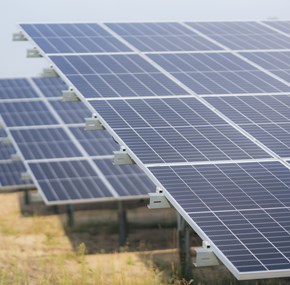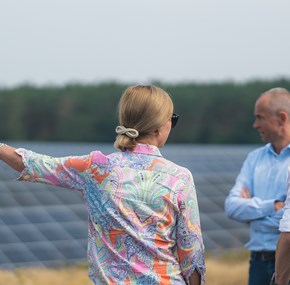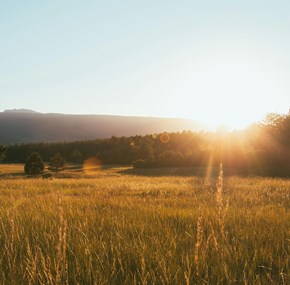Is planning the biggest threat to renewable energy?
The biggest obstacle in the transition to renewables-based energy systems may be neither technology nor cost, a new report suggests. Already today, renewable energy projects can be stalled by lengthy planning processes, and this challenge is only set to increase. Solar energy, however, may partly solve the planning problem, suggests our expert.
The debate in Denmark surrounding the plans for nearshore wind farms is an excellent example of the challenges facing the expansion of renewable energy production.
The proposed nearshore wind farms were an attempt to create a hybrid between land-based and offshore wind farms. As the wind farms are situated some kilometers from the shore, there are relatively lower costs for grid connection and fewer public protests.
But recent events have illustrated that when it comes to renewable energy, there is no miracle cure.
At one of the proposed locations on the west coast of Denmark, the company that won the contract for the nearshore wind farm, Swedish energy company Vattenfall, has recently been forced to carry out a second environmental impact assessment after protests from holiday home owners along the coast.
- A shift to an energy system based on renewable energy will obviously require sufficient space for wind farms and solar PV parks. But public resistance and the regulations covering planning and public consultation are increasingly halting projects, says Chief Investment Officer at Obton, Hans Peter Vestergaard.
Denmark covered by wind turbines
A recent report by Danish Energy (a non-commercial lobby organization for Danish energy companies) looks at the challenges facing the expansion of renewable energy in Northern Europe (Norway, Sweden, Denmark, Finland, Germany, Austria, UK, Ireland, France, Netherlands and Belgium).
To deliver on commitments to phase out coal by 2030, an area the size of Denmark would be needed for a solution using land-based wind turbines alone, whereas a much smaller area is needed for solar PV plants. With the current planning procedures, that area may prove impossible to find.
- If planning procedures for renewable energy production on land and at sea are not efficient, the necessary transition risks being stranded in endless administrative processes and appeals, the report states. It then points to Germany, where the planning challenges for land-based wind farms have caused prices for wind energy to rise again after many years of steady decline.
- If there are too few approved projects competing in the auctions, the price of renewable energy may well end up rising. This would be despite steadily decreasing prices for the renewable energy technology itself, the report says.
Years of planning
Planning a land-based wind project typically takes 5-7 years. In Denmark, this means that the planning process typically lasts longer than the 4-year terms for municipal politicians. The result is that public protests have the potential to make it to the election agenda – leading to postponed projects or outright cancellation.
Another problem with the current planning process is that public consultations often take place very late in the process. Consequently, affected citizens can often feel blindsided by the plans, and attitudes against the projects may then harden.
For these reasons, the report suggests a revision to the current planning process to greatly reduce the planning duration of land-based wind projects from the current 5-7 years. One way of doing that would be to consult the public and important stakeholders far earlier in the process.
Not the same challenges for wind and solar
The report does not draw a clear distinction between the planning challenges faced by solar and wind projects. But it is important to do so, says Hans Peter Vestergaard.
- For obvious reasons, solar projects do not face the same public resistance that wind turbines do. The most frequent criticisms against wind turbines are noise and visual pollution. In contrast, solar PV projects blend more imperceptibly into the landscape - though some neighbors have concerns about potential glare from the installations. But the bottom line is that solar projects face less resistance than land-based wind projects, he says.
Recent numbers from the European wind energy organization, WindEurope, emphasize this trend. In 2018, wind energy installations dropped by 32% compared to 2017. Especially hard hit were installations of land-based wind farms. 2018 saw a mere 7 GW of land-based wind energy being added in Europe. This is the lowest level of land-based installations since 2005. In contrast, Europe added 8 GW of new solar capacity in 2018, which is a 36% increase from 2017.
Unlike modern wind turbines, solar PV projects have the advantage of being able to fit into existing infrastructure such as factory rooftops or farm buildings. Obton is successfully developing these types of projects in both France and the Netherlands.
- A more streamlined planning process would undoubtedly benefit both wind and solar projects, but in the meantime many governments should look to solar energy as an effective way to expand renewable energy production, says Hans Peter Vestergaard.







